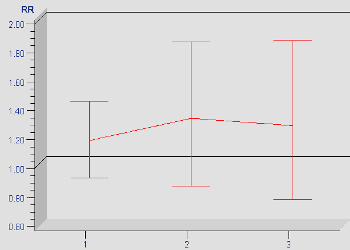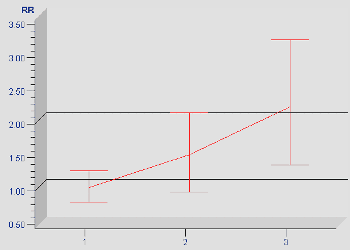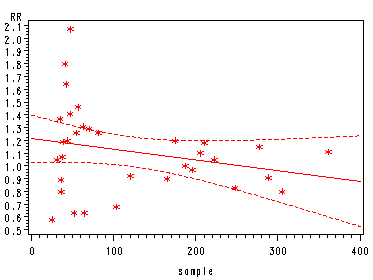 |
 |
| ||||
Hoofdmenu
Navigatie
Internationaal
Canada VS afdelingen
California Affiliates
Smokers' Club
Forces Nederland |
| ||||||||||||||||||||||||||||||||||||||||||||||||||||||||||||||||||||||||||||||||||||||||||||||||||||||||||||||||||||||||||||||||||||||||||||||||||||||||||||||||||||||||||||||||||||||||||||||||||||||||||||||||||||||||||||||||||||||||||||||||||||||||||||||||||||||||||||||||||||||||||||||||||||||||||||||||||||||||||||||||||||||||||||||||||||||||||||||||||||||||||||||||||||||||||||||||||||||||||||||||||||||||||||||||||||||||||||||||||||||||||||||||||||||||||||||||||||||||||||||||||||||||||||||||||||||||||||||||||||||||||||||||||||||||||||||||||||||||||||||||||||||||||||||||||||||||||||||||||||||||||||||||||||||||||||||||||||||||||||||||||||||||||||||||||||||||||||||||||||||||||||||||||||||||||||||||||||||||||||||||||||||||||||||||||||||||
| All subjects* |
Women* |
|||||||||
|---|---|---|---|---|---|---|---|---|---|---|
| Case subjects | Control subjects | OR | 95% CI | P for trend† | Case subjects | Control subjects | OR | 95% CI | P for trend† | |
| Ever exposed | ||||||||||
|
No |
252 | 496 | 1.00 | Referent | 187 | 295 | 1.00 | Referent | ||
|
Yes |
389 | 1021 | 0.78 | 0.64–0.96 | 314 | 700 | 0.77 | 0.61–0.98 | ||
|
Missing values |
9 | 25 | 8 | 16 | ||||||
|
No. of smokers in household |
||||||||||
|
None |
252 | 496 | 1.00 | Referent | 187 | 295 | 1.00 | Referent | ||
|
1 |
305 | 750 | 0.80 | 0.64–0.99 | 243 | 528 | 0.76 | 0.59–0.98 | ||
|
2 |
52 | 191 | 0.63 | 0.44–0.90 | 43 | 117 | 0.69 | 0.46–1.04 | ||
|
>=3 |
32 | 80 | 1.05 | 0.65–1.70 | .24 | 28 | 55 | 1.13 | 0.67–1.91 | .54 |
|
Missing values |
9 | 25 | 8 | 16 | ||||||
| Cumulative exposure (weighted smoker-years) |
||||||||||
|
0 |
252 | 496 | 1.00 | Referent | 187 | 295 | 1.00 | Referent | ||
|
0.1–14.0 |
248 | 582 | 0.83 | 0.66–1.04 | 193 | 394 | 0.78 | 0.60–1.02 | ||
|
14.1–18.0 |
104 | 332 | 0.68 | 0.51–0.92 | 93 | 239 | 0.73 | 0.53–1.02 | ||
|
>=18.1 |
37 | 107 | 0.80 | 0.51–1.24 | .02 | 28 | 67 | 0.90 | 0.54–1.50 | .10 |
|
Missing values |
9 | 25 | 8 | 16 | ||||||
* OR 4 odds ratio adjusted for age and sex–center interaction; CI 4 confidence
interval.
† Two-tailed P value of test for linear trend.
| Blue is no statistical significant effect | Green is positive effect | Red statistical significant effect |
|
|
|
The WHO numbers are more likely to indicate a POSITIVE effect on childhood exposure to SHS! (RR<1). Reason: immune system training? Other studies also give an indication in this direction.
| All subjects* |
Women* |
|||||||||
|---|---|---|---|---|---|---|---|---|---|---|
|
Case subjects |
Control subjects |
OR | 95% CI |
P for trend† |
Case subjects |
Control subjects |
OR | 95% CI | P for trend† | |
| Ever exposed | ||||||||||
| No | 305 | 838 | 1.00 | Referent | 187 | 376 | 1.00 | Referent | ||
| Yes | 344 | 700 | 1.16 | 0.93–1.44 | 321 | 632 | 1.11 | 0.88–1.39 | ||
| Missing values | 1 | 4 | 1 | 3 |
|
|||||
| Duration of exposure (in years) |
|
|||||||||
| Unexposed | 305 | 838 | 1.00 | Referent | 187 | 376 | 1.00 | Referent | ||
| 1–34 | 223 | 498 | 1.05 | 0.83–1.33 | 202 | 439 | 0.99 | 0.77–1.27 | ||
| 35–42 | 65 | 103 | 0.63 | 0.12–2.37 | 64 | 98 | 1.57 | 1.06–2.31 | ||
| ≥43 | 38 | 80 | 1.07 | 0.68–1.68 | .10 | 37 | 76 | 1.05 | 0.66–1.68 | .19 |
| Missing values | 19 | 23 | 19 | 22 | ||||||
| Duration of exposure (hours/day × years) |
|
|||||||||
| Unexposed | 297 | 778 | 1.00 | Referent | 181 | 327 | 1.00 | Referent | ||
| 1–135 | 165 | 396 | 0.90 | 0.70–1.16 | 146 | 348 | 0.80 | 0.61–1.06 | ||
| 136–223 | 44 | 81 | 1.20 | 0.78–1.85 | 42 | 75 | 1.12 | 0.72–1.74 | ||
| ≥224 | 41 | 53 | 1.80 | 1.12–2.90 | .02 | 41 | 52 | 1.70 | 1.05–2.75 | .03 |
| Missing values | 103 | 234 | 99 | 209 | ||||||
| Average exposure (cigarettes/day) |
|
|||||||||
| Unexposed | 297 | 778 | 1.00 | Referent | 181 | 327 | 1.00 | Referent | ||
| 0.1–10.0 | 206 | 411 | 1.10 | 0.86–1.40 | 184 | 360 | 1.00 | 0.77–1.31 | ||
| 10.1–18.0 | 25 | 83 | 0.58 | 0.35–0.90 | 25 | 79 | 0.57 | 0.34–0.93 | ||
| ≥18.1 | 35 | 55 | 1.37 | 0.85–2.20 | .88 | 35 | 52 | 1.34 | 0.83–2.17 | .97 |
| Missing values | 87 | 215 | 84 | 193 | ||||||
| Cumulative exposure (pack-years) |
|
|||||||||
| Unexposed | 297 | 778 | 1.00 | Referent | 181 | 327 | 1.00 | Referent | ||
| 0.1–13.0 | 188 | 411 | 1.00 | 0.78–1.28 | 167 | 358 | 0.91 | 0.70–1.19 | ||
| 13.1–23.0 | 36 | 83 | 0.89 | 0.57–1.39 | 35 | 78 | 0.83 | 0.52–1.30 | ||
| ≥23.1 | 42 | 55 | 1.64 | 1.04–2.59 | .09 | 42 | 55 | 1.54 | 0.97–2.44 | .15 |
| Missing values | 87 | 215 | 84 | 193 | ||||||
*OR
= odds ratio adjusted for age and sex–center interaction; CI = confidence interval.†Two-tailed P value of test for linear trend.
| Blue is no statistical significant effect | Green is positive effect | Red statistical significant effect |
| All subjects* |
Women* |
|||||||||
|---|---|---|---|---|---|---|---|---|---|---|
| Case subjects | Control subjects | OR | 95% CI | P for trend† | Case subjects | Control subjects | OR | 95% CI | P for trend† | |
| Ever exposed | ||||||||||
|
No |
276 | 687 | 1.00 | Referent | 240 | 535 | 1.00 | Referent | ||
|
Yes |
374 | 855 | 1.17 | 0.9–1.45 | 269 | 476 | 1.19 | 0.94–1.51 | ||
|
Missing values |
0 | 0 | 0 | 0 | ||||||
| Duration of exposure (in years) | ||||||||||
|
Unexposed |
276 | 687 | 1.00 | Referent | 240 | 535 | 1.00 | Referent | ||
|
1–29 |
278 | 634 | 1.15 | 0.91–1.44 | 211 | 399 | 1.14 | 0.89-1.47 | ||
|
30–38 |
55 | 129 | 1.26 | 0.85-1.85 | 37 | 47 | 1.50 | 0.93-2.43 | ||
|
>=39 |
39 | 91 | 1.19 | 0.76-1.86 | .21 | 20 | 29 | 1.24 | 0.67-2.28 | .19 |
|
Missing values |
2 | 1 | 1 | 1 | ||||||
| Duration of exposure (level‡ × hours/day × years) |
||||||||||
|
Unexposed |
276 | 687 | 1.00 | Referent | 240 | 535 | 1.00 | Referent | ||
|
0.1–46.1 |
196 | 525 | 0.97 | 0.76–1.25 | 148 | 316 | 1.03 | 0.78–1.36 | ||
|
46.2–88.9 |
47 | 105 | 1.41 | 0.93–2.12 | 26 | 54 | 1.08 | 0.65–1.81 | ||
|
>=89.0 |
48 | 71 | 2.07 | 1.33–3.21 | .01 | 30 | 33 | 1.87 | 1.10–3.20 | .03 |
|
Missing values |
83 | 154 | 65 | 73 | ||||||
* OR = odds ratio adjusted for age and sex–center interaction; CI = confidence
interval.
† Two-tailed P value of test for linear trend.
| Blue is no statistical significant effect | Green is positive effect | Red statistical significant effect |
 Exposure in years |
 Same level x hours/day x years |
Conclusion: Only in the worst case a weak statistical relation can be shown. In all other cases there even can be a positive effect!
Like in the results of the non-smoking wives studies, there's a strong indication that higher sample sizes show lower RR's:

Regression Analysis
The higher RR's are found in the small samples. Higher samples sizes are closer to the population size. The WHO argument that their sample size had been too small doesn't look to be true. This analysis seems to show that they would have found even lower risks, even less proof of a relation between SHS and lung cancer!
|